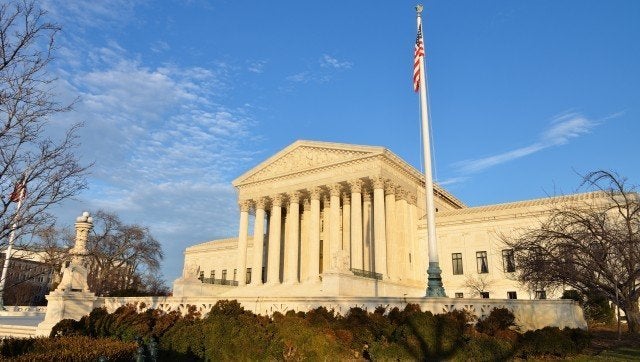
This week’s Supreme Court oral argument in Fisher v. Texas showed the Justices’ focus on the technical interpretation of the equal protection clause of the Constitution. Over the last twenty-four hours, legal and political commentators have hotly debated the validity and meaning of the concept of “critical mass” as a standard to achieve diversity in universities.
Notably, Fisher has been popularly branded an “affirmative action” case but the admissions policy of the University of Texas at Austin at issue in the case does not rely on racial quotas or preferences. It merely uses race as one of a multitude of factors when evaluating what an applicant can add to the University community.
In addition, the constitutional contours of this case has a larger practical import to our society that we should not forget. Specifically, the Court’s decision could result in policies that provide even fewer educational and economic opportunities to young black men and, in turn, result in the incarceration of more of this large swath of our community.
Young black men live in a reality in which prisons are more accessible than universities. The United States imprisons more people per capita than any other country in the world, with more than 2.3 million people behind bars. We have 5 percent of the world’s population but 25 percent of its prisoners. There are currently more black men under the control of corrections departments than were enslaved before the start of the Civil War.
Our government’s deliberate policy choice to underinvest in education in urban communities of color leads to high dropout rates among young black and Latino men, which puts them at higher risk of imprisonment. Without the necessary educational or technical skills, these young men who are most poorly served by our public education system have little chance to secure stable employment paying a living wage.
There is a tight correlation between undereducation and mass incarceration. Increased access to education has been proven to provide a better future for people who face the greatest barriers to economic opportunities. Research has also indisputably shown that states that invest more money in public education achieve better public safety outcomes and lower crime rates.
Yet, our government continues to prioritize funding prisons over classrooms. In the last twenty years, state and local spending on imprisonment doubled. Meanwhile, the share of state and local budgets devoted to higher education dropped by 21 percent. For example, in 2008, Texas spent more than $175 million to imprison residents from 10 neighborhoods in Houston while cutting $26.8 million in funding for public schools in those neighborhoods.
Young black men who drop out of high school are more likely to end up behind bars than they are to be employed, according to new findings by sociologist Becky Pettit in her book, Invisible Men: Mass Incarceration and the Myth of Black Progress. High rates of imprisonment have combined with the devastating effects of the Great Recession to increase the racial wealth divide so that the median white family has a net worth of $113,000, while that number is a mere $5,600 for a black family and $6,300 for a Latino family.
With such a stark racial wealth divide, providing all young people with access to the necessary education and resources to achieve economic and social success is a national imperative. It will strengthen urban communities, support families, increase wages, create a positive future for children, and increase overall American economic growth.
Inclusive admissions policies, such as the one now before the Court in Fisher, are one of the few ways our government has invested in educational opportunities for people of color. Such policies are limited in their reach and can be only partial solutions to the historical and current exclusion of people of color from such opportunities. But they are still necessary.
The Supreme Court should consider the impact on our nation when considering whether the University of Texas at Austin has demonstrated a need for its inclusive admissions policy under the constitutional test. But the Court’s support of these policies alone will not be enough to break the cycle of poverty-to-prison in urban communities of color. Our government must also redirect out-of-control spending on imprisonment into substantial investments in elementary and secondary public education in these communities.
Inimai M. Chettiar is Director and Gabriel Daniel Solis is a Research Associate in the Justice Program at the Brennan Center for Justice at NYU School of Law.